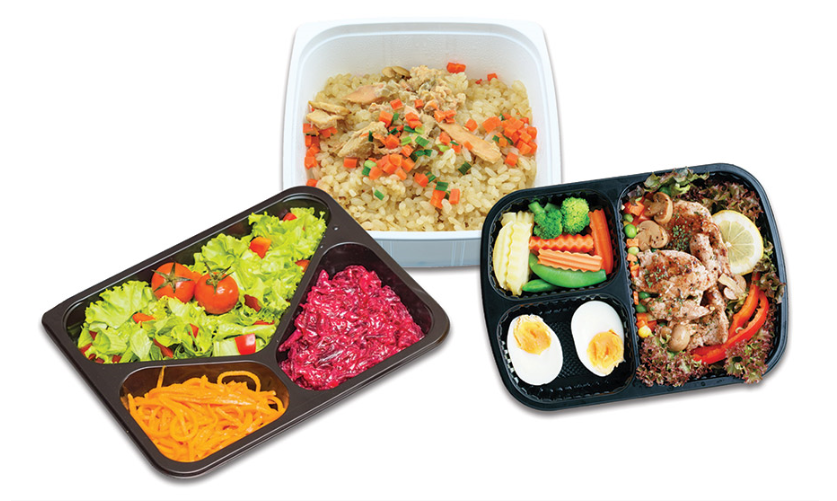Ink Suppliers Responding to Key Flexible Packaging Market Drivers
Time:2017-10-13 From:

Consumers today are busier than ever with less sit-down meals and the need to eat on the go. At the same time, they want to eat well and are even willing to pay a premium price for healthy food.
Grocery stores today are now stocked more than ever with freshly prepared meals that are ready to go for consumers. In fact, prepared meals have become nearly a $29 billion-a-year business, growing twice as fast as overall grocery store sales, according to a Consumer Reports article from 2016.
This trend has led to smaller, portable packaging and the increasing use of refillable bottles. Since consumers want to see that the food they are buying is fresh, see-through windows are normally mandatory.
At the same time, the package must look good. Consumers want a creative package that stands out on the shelf, something that is attractive as they carry it out of the store.
Smaller packaging with windows means shrinking ink usage and creative space for visual wonder. This has led to the increasing usage of sensory coatings that are aimed at helping brand owners give their packaging the wow factor.
These coatings can provide special effects that allow product packaging to stand out on store shelves visually through high luster metallic, fluorescent, glitter, and pearlescent as well as iridescent finishes.
Tactile coatings, ranging from coarse and gritty to soft and smooth, appeal to the sense of touch. Other coatings can create an interactive experience with color shifting, reticulating and other aromatic coatings.
As a means of protecting many of these fresh foods from light exposure, many brands invest in opaque white inks. These inks not only help to minimize the product from light, they also provide a good surface to print on for superior graphics on the package.
Shelf life can also be enhanced using oxygen barrier coatings, which can be applied or pre-coated onto packaging films to allow packaging to be seen through a window on the packaging. Oxygen barrier coatings can provide a smooth, homogenous, pinhole-free layer that can be easily overprinted with inks and laminated to a variety of secondary films and are cost-effective, recyclable, biodegradable and press-ready.
Personalization is another trend brands are investing in. As digital printing becomes more prevalent in the marketplace, especially on labels, many converters are now offering hybrid presses with an onboard digital deck to personalize soda cans with people’s names or potato chip bags with on-the-fly changes.
Inks have been developed to help maximize changeovers on press. One ink system, for example, can be used on multiple types of presses to allow for shorter runs and personalization, allowing brand owners to do more with less.
In today’s eco-conscious society, businesses and consumers alike strongly care about products that are manufactured using sustainable practices. Brands, suppliers, retailers, printers and consumers all want to claim they are green and doing their part to take care of the planet.
Consumers prefer brands that are seen to be pursuing sustainability objectives. Research by Asia Pulp & Paper found that 56 percent of U.S. consumers want more sustainable packaging and 42 percent say they would pay more for it.
Global retailers like Walmart, Target and Home Depot have taken steps to save energy, reduce waste and encourage brands to use packaging materials that reduce weight. They make it a priority to partner with suppliers that utilize eco-efficiency practices.
In order to meet retailer expectations, consumer demands and all regulatory requirements, packaging inks are expected to be eco-friendly, bio-renewable and biodegradable.
According to the National Association of Printing Ink Manufacturers (NAPIM), a bio-renewable ink is derived from tree, plant, insect and/or animal materials. These can include gums, resins, waxes, solvents, oils and other polymer building blocks.
Independent verification that an ink contains a certain percentage of bio-renewable content can be achieved through NAPIM’s bio-renewable content program, which assigns inks with an index number. An index number of 60, for example, means that the ink contains 60 percent bio-renewable content.
Eco-friendly inks that use a very high percentage of bio-renewable materials and that are printed on a substrate designed to be biodegradable can be considered compostable in addition to being non-toxic to the aquatic environment.
Inks that meet these requirements should be free or only have trace levels of heavy metals, and reduce volatile organic compounds that are released in the atmosphere.
Ink suppliers that develop inks formulated with significantly higher levels of bio-renewable resin content compared to other previous market offerings and meet all of the important adhesion requirements of a printer can play a critical role in helping converters, brands and, ultimately, consumers meet the eco-efficiency standards and expectations that have been set in the industry.
As consumer behaviors continue to change, so do the processes and products developed by converters and ink suppliers. There are many market drivers today affecting the flexible packaging market, including lightweighting through standup pouches, peelable pouches, single-serve prepared food packages, enhanced shelf life, visually appealing graphics, environmental benefits and food safety compliance.
Ink suppliers stand ready to work closely with converters and their brand owner customers to continue developing new innovative systems that will be sustainable, work seamlessly, innovate packaging on shelf and improve packaging contents as consumer needs evolve.
Sun Chemical
News Source:Flexible Packaging
Written By Anthony Renzi

